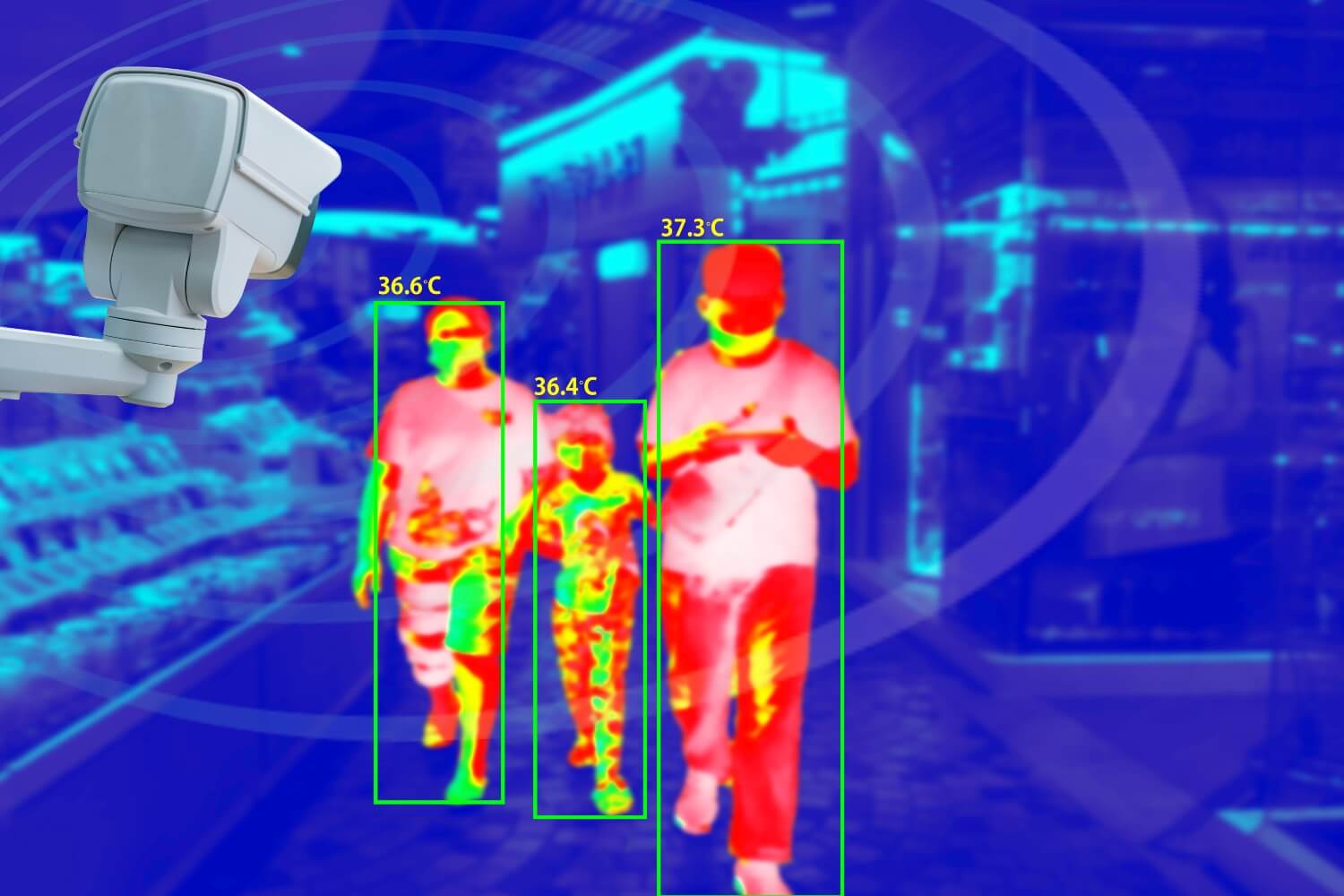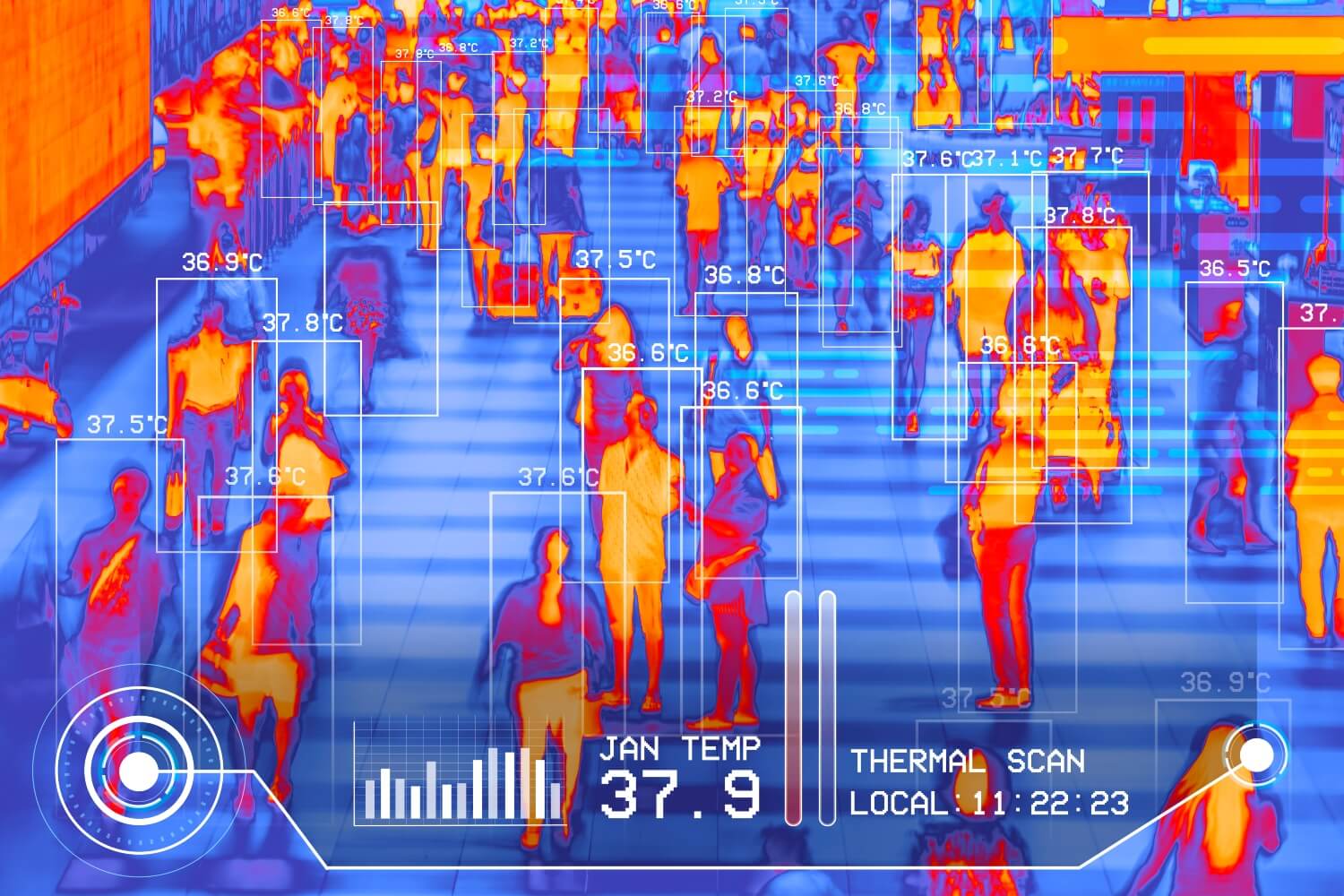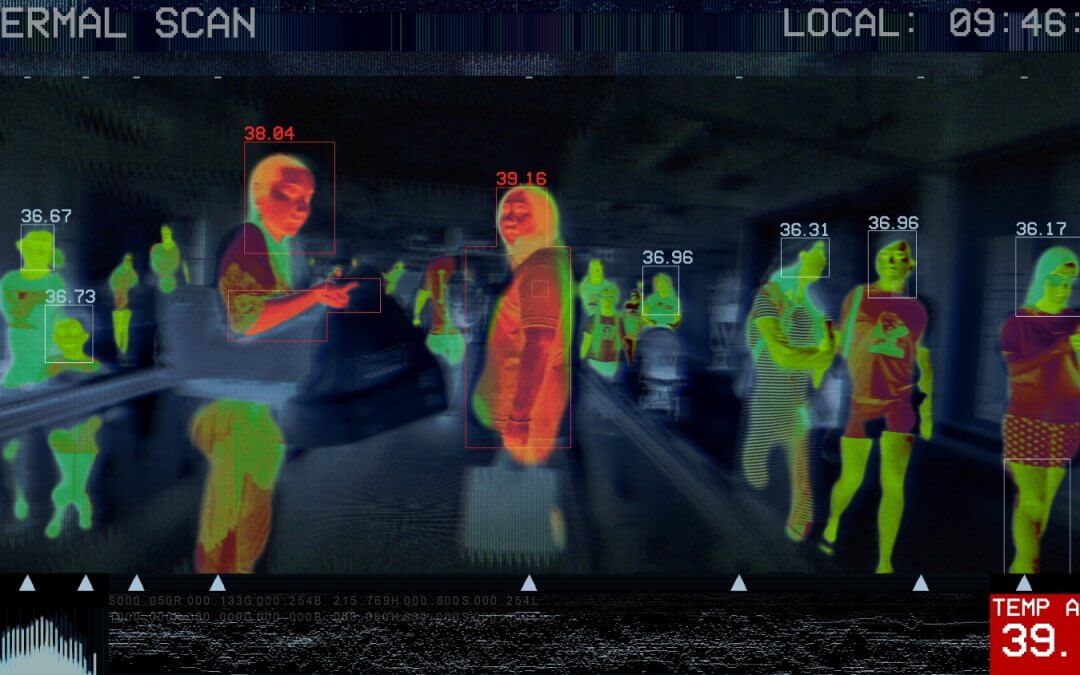Most surveillance cameras depend on visible light, which limits their reliability in darkness, fog, smoke, or visually complex environments. In these conditions, intruders can move undetected, and traditional systems often fail to trigger alerts.
Thermal imaging cameras address this gap by detecting heat signatures rather than relying on light. They offer consistent visibility, day or night, and reduce false alarms by focusing only on real thermal activity.
In this blog, we’ll break down how thermal cameras work, where they outperform standard surveillance, and why more industries are turning to thermal solutions to strengthen their security infrastructure.
How Thermal Imaging Technology Works
To understand the value of thermal imaging in security, it’s essential first to grasp the fundamentals of how this technology operates.
Detecting Heat, Not Light
Thermal imaging cameras use infrared sensors to detect heat (infrared radiation) emitted by all objects. Wai Kit Wong concludes in his survey that: “Thermal Imaging Cameras can be used to detect trespassers in environments with poor lighting conditions, whereas the conventional digital cameras are less applicable in.”
This data is then translated into a visual display where temperature differences create contrast, warmer objects appear brighter, while cooler objects appear darker.
-
No need for external light: Unlike standard CCTV cameras, thermal cameras do not rely on visible light sources.
-
Detect through obscurants: Fog, smoke, and foliage do not obstruct thermal detection as easily as they do visible light.
-
Works day and night: Thermal cameras operate with the same efficiency regardless of time of day or lighting conditions.
Passive Surveillance for Stealth Monitoring
Since thermal cameras detect naturally emitted heat, they don’t emit any light or sound. This makes them inherently discreet, an advantage in high-risk or covert surveillance situations.
Integration with Smart Analytics
Modern thermal cameras are often integrated with intelligent video analytics. This includes:
-
Motion detection
-
Intrusion alerts
-
Human and vehicle recognition
These features allow for precise alerts without the noise of false positives commonly triggered in traditional systems by shadows, headlights, or small animals.
Transitioning from here, we now examine how these technical strengths translate into real-world security improvements across various environments.
Enhanced Perimeter Intrusion Detection
One of the most common uses of thermal cameras is securing property boundaries. Whether it’s a remote warehouse or a critical infrastructure site, early detection of intrusions is key to minimizing risk.
Early Detection, Faster Response
Thermal cameras detect heat signatures from humans or vehicles approaching from long distances, even in complete darkness or dense fog.
-
Fewer blind spots: Unlike visible cameras that may require lighting or may be affected by glare, thermal cameras give consistent visibility across the monitored area.
-
Long-range surveillance: High-resolution thermal cameras can detect movement across hundreds of meters, depending on the lens and environment.
-
Instant alerts: Integrated systems can trigger alarms, send real-time notifications, or alert remote guards when unauthorized motion is detected.
Reducing False Alarms
False alarms waste valuable resources. Animals, wind-blown objects, or lighting changes often trigger false positives in conventional CCTV systems. With thermal technology:
-
Detection is based on body heat, not motion alone.
-
Environmental changes do not affect performance.
-
Analytics can filter out non-threats using shape and temperature recognition.
This leads to higher accuracy and reduced response time, which is critical for perimeter protection.
Securing High-Risk or Complex Environments

Specific environments present unique challenges for traditional surveillance. These include industrial sites, ports, airports, or power plants, where obstacles, weather, and scale complicate visual monitoring.
Better Visibility in Harsh Conditions
Dust, fog, smoke, or total darkness can disable regular cameras. Thermal imaging shines in such scenarios by delivering uninterrupted surveillance.
-
Industrial sites: Detect trespassers through steam, dust, or night operations.
-
Airports and ports: Maintain situational awareness in all lighting and weather conditions.
-
Utility and energy plants: Identify unauthorized presence near high-voltage or hazardous zones.
Critical for Fire Risk and Hazard Monitoring
Thermal imaging is not only helpful in detecting people but also in spotting potential fire hazards.
-
Identify overheated equipment before failure.
-
Monitor temperature-sensitive storage areas.
-
Prevent fire by detecting hot spots early.
This adds an extra layer of safety and asset protection.
Recent research into synthetic thermal imaging datasets demonstrated that AI-powered thermal cameras can detect intruders with over 90% accuracy, even in low-visibility conditions (Nguyen et al., arXiv 2023). Although withdrawn, the study highlights the strong potential of thermal imaging combined with intelligent analytics to reduce false alarms.
Simplifying Complex Layouts
In environments with multiple levels, fences, or overlapping zones, thermal cameras simplify monitoring by highlighting temperature anomalies rather than depending on light or motion.
Boosting Commercial and Residential Security
While often used in industrial or military applications, thermal imaging is now more accessible for businesses and even homeowners. It enhances security in several practical ways.
Deterrence Without Visibility
Burglars and intruders often operate under the cover of darkness. Thermal cameras can detect them:
-
Before they reach entry points
-
Even if they attempt to stay hidden behind bushes or shadows
-
Without giving away the presence of the camera
This means law enforcement or private security can be alerted before an incident occurs, not after.
24/7 Monitoring Without Lighting Costs
Using floodlights for night security is not only costly but can also cause glare or leave blind spots. Thermal imaging provides:
-
Round-the-clock visibility without lighting infrastructure
-
Lower electricity costs over time
-
Less maintenance, as there are no bulbs to replace
Integrating With Smart Home and Office Systems

Thermal cameras now integrate with:
-
Smart locks
-
Alarm systems
-
Video analytics
-
Access control systems
This allows for automated responses, like locking doors or sending mobile alerts when unauthorized heat signatures are detected.
Improved Privacy Compliance
In residential or business settings where privacy regulations are strict, thermal imaging offers non-invasive surveillance. It doesn’t record detailed facial features but can still detect and log activity.
Frequently Asked Questions
How do thermal imaging cameras work to enhance security?
Thermal imaging cameras detect the natural heat emitted by objects, animals, and people instead of relying on visible light. This allows them to provide clear images in total darkness, through fog, smoke, or glare. By capturing infrared radiation, they ensure constant surveillance, even when standard cameras fail to perform.
What are the main advantages of traditional security cameras?
Unlike conventional cameras, thermal systems don’t need light to function, which makes them ideal for nighttime or low-visibility conditions. They significantly reduce false alarms by focusing only on heat sources, not shadows or movements caused by the environment. They also maintain clarity in harsh weather, such as fog or light rain.
How do thermal cameras help with perimeter and large-area security?
Thermal cameras are especially effective for securing large, open areas like warehouses, campuses, or borders. Their long-range capabilities detect heat signatures from far away, even if a person or vehicle tries to hide. This early detection gives security teams more time to respond and reduces the risk of undetected breaches.
Can thermal imaging cameras operate discreetly?
Yes, thermal cameras operate passively and silently, without projecting any visible light or infrared beams. This makes them nearly invisible to intruders, allowing for covert surveillance. Their discreet nature adds a layer of stealth that’s especially useful in sensitive or high-security environments.
What are the cost and operational benefits for businesses using thermal cameras?
Businesses see immediate value in fewer false alarms and lower staffing needs for manual monitoring. Since thermal cameras don’t require lighting, companies also save on electricity and infrastructure. With recent advancements, this technology is more accessible, making it a wise investment for long-term security efficiency.
A Smarter Way to See and Secure
Thermal imaging cameras are transforming the way we secure our environments. From detecting invisible threats to reducing false alarms, their advantages span a wide range of applications. They empower both security professionals and private users with better detection, earlier alerts, and safer surroundings.
Whether you’re protecting critical infrastructure, managing a business, or safeguarding your home, thermal cameras offer visibility that standard systems cannot match. They see what the eye and traditional surveillance miss. And in security, missing nothing is everything.
To explore how thermal imaging can elevate your security strategy, visit Pioneer Security Services and discover proven solutions tailored to real-world protection.



